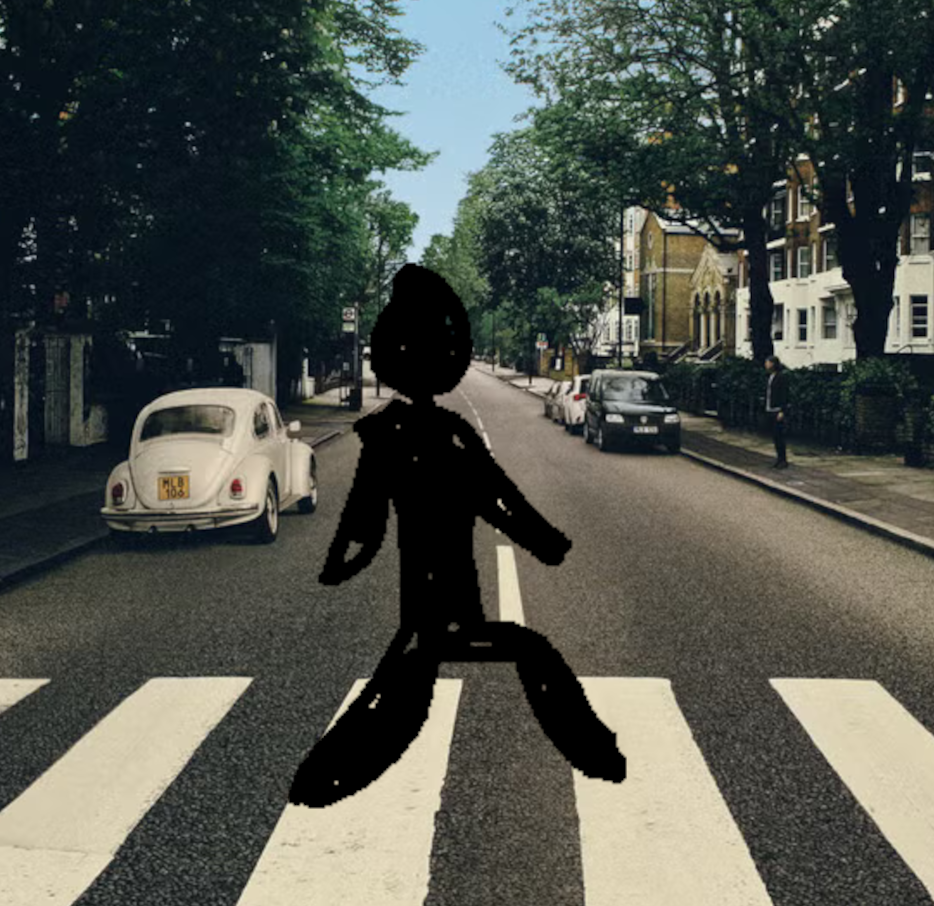How about ANY FINITE SEQUENCE AT ALL?
It’s almost sure to be the case, but nobody has managed to prove it yet.
Simply being infinite and non-repeating doesn’t guarantee that all finite sequences will appear. For example, you could have an infinite non-repeating number that doesn’t have any 9s in it. But, as far as numbers go, exceptions like that are very rare, and in almost all (infinite, non-repeating) numbers you’ll have all finite sequences appearing.
Exceptions are infinite. Is that rare?
Rare in this context is a question of density. There are infinitely many integers within the real numbers, for example, but there are far more non-integers than integers. So integers are more rare within the real.
There is not density in infinity
I think you mean “I don’t understand density in infinity”.
They should look up the classic example of rationals in the real numbers. Their statement could hardly be more wrong.
we were talking about probability
I most assuredly am talking about your false statement regarding density.
Yes. The exceptions are a smaller cardinality of infinity than the set of all real numbers.
Yes, compared to the infinitely more non exceptions. For each infinite number that doesn’t contain the digit 9 you have an infinite amount of numbers that can be mapped to that by removing all the 9s. For example 3.99345 and 3.34999995 both map to 3.345. In the other direction it doesn’t work that way.
Very rare in the sense that they have a probability of 0.
There are lot that fit that pattern. However, most/all naturally used irrational numbers seem to be normal. Maths has, however had enough things that seemed ‘obvious’ which turned out to be false later. Just because it’s obvious doesn’t mean it’s mathematically true.
No, the fact that a number is infinite and non-repeating doesn’t mean that and since in order to disprove something you need only one example here it is: 0.1101001000100001000001… this is a number that goes 1 and then x times 0 with x incrementing. It is infinite and non-repeating, yet doesn’t contain a single 2.
This proves that an infinite, non-repeating number needn’t contain any given finite numeric sequence, but it doesn’t prove that an infinite, non-repeating number can’t. This is not to say that Pi does contain all finite numeric sequences, just that this statement isn’t sufficient to prove it can’t.
you are absolutely right.
it just proves that even if Pi contains all finite sequences it’s not “since it oa infinite and non-repeating”
What about in the context of Pi?
Doesn’t the sequence “01” repeat? Or am I misunderstanding the term.
A nonrepeating number does not mean that a sequence within that number never happens again, it means that the there is no point in the number where you can predict the numbers to follow by playing back a subset of the numbers before that point on repeat. So for 01 to be the “repeating pattern”, the rest of the number at some point would have to be 010101010101010101… You can find the sequence “14” at digits 2 and 3, 104 and 105, 251 and 252, and 296 and 297 (I’m sure more places as well).
yeah, but non-repeating in terms of decimal numbers usually mean: you cannot write it as 0.(abc), which would mean 0.abcabcabcabc…
1/3 is infinite in decimal form, as a more common example. 0.333333333….
it repeats
But didn’t you just give a counterexample with an infinite number? OP only said something about finite numbers.
They were showing that another Infinite repeating sequence 0.1010010001… is infinite and non-repeating (like pi) but doesn’t contain all finite numbers
You mean infinite and non- repeating?
This! Fixed it. Thanks!
“2” is a finite sequence that doesn’t exist in the example number
Wouldn’t binary ‘10’ be 2, which it does contain? I feel like that’s cheating, since binary is just a mode of interpreting information …all numbers, regardless of base, can be represented in binary.
They’re not writing in binary. They’re defining a base 10 number that is 0.11, followed by a single 0, then 1, then two 0s, then 1, then three 0s, then 1, and so on. The definition ensures that it never repeats, but because it only contains 1 and 0, it would never contain any sequence with the numbers 2 through 9.
And you can strongman this by first using the string 23456789 at the start. It does contain all base 10 digits but not 22.
Thanks for the consideration for my pronouns XD
he/him if it ever matters
A number for which that is true is called a normal number. It’s proven that almost all real numbers are normal, but it’s very difficult to prove that any particular number is normal. It hasn’t yet been proved that π is normal, though it’s generally assumed to be.
I love the idea (and it’s definitely true) that there are irrational numbers which, when written in a suitable base, contain the sequence of characters, “This number is provably normal” and are simultaneously not normal.
Technically to meet OPs criteria it needs only be a rich number in base 10, not necessarily a normal one. Although being normal would certainly be sufficient
The jury is out on whether every finite sequence of digits is contained in pi.
However, there are a multitude of real numbers that contain every finite sequence of digits when written in base 10. Here’s one, which is defined by concatenating the digits of every non-negative integer in increasing order. It looks like this:
0 . 0 1 2 3 4 5 6 7 8 9 10 11 12 ...fun fact, “most” real numbers have this property. If you were to mark each one on a number line, you’d fill the whole line out. Numbers that don’t have this property are vanishingly rare.
This is what allows pifs to work!
Thats very cool. It brings to mind some sort of espionage where spies are exchanging massive messages contained in 2 numbers. The index and the Metadata length. All the other spy has to do is pass it though pifs to decode. Maybe adding some salt as well to prevent someone figuring it out.
I’m a layman here and not a mathematician but how does it store the complete value of pi and not rounded up to a certain amount? Or do one of the libraries generate that?
You generate it when needed, using one of the known sequences that converges to π. As a simple example, the
pi()recipe here shows how to compute π to arbitrary precision. For an application like pifs you can do even better and use the BBP formula which lets you directly calculate a specific hexadecimal digit of π.
I want that project continues so hard. Sounds amazing
I can’t tell if this is a joke or real code… like for this sentence below.
The cat is back.
Will that repo seriously run until it finds where that is in pi? However long it might take, hours, days, years, decades, and then tell you, so you can look it up quickly?
I can’t tell if this is a joke or real code
Yes.
Will that repo seriously run until it finds where that is in pi?
Sure. It’ll take a very long while though. We can estimate roughly how long - encoded as ASCII and translated to hex your sentence looks like
54686520636174206973206261636b. That’s 30 hexadecimal digits. So very roughly, one of each16^3030-digit sequences will match this one. So on average, you’d need to look about16^30 * 30 ≈ 4e37digits into π to find a sequence matching this one. For comparison, something on the order of 1e15 digits of pi were ever calculated.so you can look it up quickly?
Not very quickly, it’s still
n log ntime. More importantly, information theory is ruthless: there exist no compression algorithms that have on average a >1 compression coefficient for arbitrary data. So if you tried to use π as compression, the offsets you get would on average be larger than the data you are compressing. For example, your data here can be written written as 30 hexadecimal digits, but the offset into pi would be on the order of 4e37, which takes ~90 hexadecimal digits to write down.
Thanks. I love these kind of fun OpenSource community projects/ideas/jokes whatever. The readme reminds me of ed
it’s actually unknown. It looks like it, but it is not proven
Also is it even possible to prove it at all? My completely math inept brain thinks that it might be similar to the countable vs uncountable infinities thing, where even if you mapped every element of a countable infinity to one in the uncountable infinity, you could still generate more elements from the uncountable infinity. Would the same kind of logic apply to sequences in pi?
Man, you’re giving me flashbacks to real analysis. Shit is weird. Like the set of all integers is the same size as the set of all positive integers. The set of all fractions, including whole numbers, aka integers, is the same size as the set of all integers. The set of all real numbers (all numbers including factions and irrational numbers like pi) is the same size as the set of all real numbers between 0 and 1. The proofs make perfect sense, but the conclusions are maddening.
its been proven for some other numbers, but not yet for pi.
The term for what you’re describing is a “normal number”. As @lily33@lemm.ee correctly pointed out it is still an open question whether pi is normal. This is a fun, simple-language exploration of the question in iambic pentameter, and is only 3 minutes and 45 seconds long.
Merry Christmas!
It’s remarkable how there are uncountably many non-normal numbers, yet they take up no space at all in the real numbers (form a null set), since almost all numbers are normal. And despite this, we can only prove normality for some specific classes of examples.
It helps me to think, how there are many “totally random” or non computable numbers, that are not normal because they don’t contain the digit 1.
0.101001000100001000001 . . .
 I’m infinite and non-repeating. Can you find a 2 in me?
I’m infinite and non-repeating. Can you find a 2 in me?You can’t prove that there isn’t one somewhere
You can, it’s literally the way the number is defined.
Defined where ?
It’s implicitly defined here by its decimal form:
0.101001000100001000001 . . .
The definition of this number is that the number of 0s after each 1 is given by the total previous number of 1s in the sequence. That’s why it can’t contain 2 despite being infinite and non-repeating.
0.101001000100001000001 . . .
Might very well be :
0.101001000100001000001202002000200002000002 …
Real life, is different from gamified questions asked in student exams.
Implicitly defining a number via it’s decimal form typically relies on their being a pattern to follow after the ellipsis. You can define a different number with twos in it, but if you put an ellipsis at the end you’re implying there’s a different pattern to follow for the rest of the decimal expansion, hence your number is not the same number as the one without twos in it.
assumption ≠ definition
Pi is often defined as 3.141 592 653… Does that mean Pi does not contain any 7s or 8s?
That’s a decimal approximation of Pi with an ellipsis at the end to indicate its an approximation, not a definition. The way the ellipsis is used above is different. It’s being used to define a number via the decimal expansion by saying it’s an infinite sum of negative powers of 10 defined by the pattern before the ellipsis.
So we have:
0.101001000100001000001 . . . = 10^-1 + 10^-2 + 10^-3 + 10^-4 +10^-5+ . . .
Pi, however, is not defined this way. Pi can be defined as twice the solution of the integral from -1 to 1 of the square root of (1-x^2), a function defining a unit semi-circle.
Why couldn’t you?
Because you’d need to search through an infinite number of digits (unless you have access to the original formula)
Are you trying to say the answer to their question is no? Because if so, you’re wrong, and if not I’m not sure what you’re trying to say.
The conclusion does not follow from the premises, as evidenced by my counterexample. It could be the case that every finite string of digits appears in the decimal expansion of pi, but if that’s the case, a proof would have to involve more properties than an infinite non-repeating decimal expansion. I would like to see your proof that every finite string of digits appears in the decimal expansion of pi.
Well that’s just being pointlessly pedantic, obviously they fucking know that a repeating number of all zeros and ones doesn’t have a two in it. This is pure reddit pedantry you’re doing
It’s a math proof. Chill.
deleted by creator
It kind of does come across as pedantic – the real question is just that “Does pi contain all sequences”
But because of the way that it is phrased, in mathematics you do a lot of problems/phrasing proofs where you would be expected to follow along exactly in this pedantic manner
You might want to stay away from higher maths and all discussions around it, like this one.
You might want to play in traffic
Are you Pi?
Shit, opsec fail.
deleted by creator
It has not been proven either way but if pi is proven to be normal then yes. https://en.m.wikipedia.org/wiki/Normal_number
Not just any all finite number sequence appear in pi
Can you prove this? Or link a proof?
Yes.
And if you’re thinking of a compression algorithm, nope, pigeonhole principle.
https://github.com/philipl/pifs
πfs is a revolutionary new file system that, instead of wasting space storing your data on your hard drive, stores your data in π! You’ll never run out of space again - π holds every file that could possibly exist! They said 100% compression was impossible? You’re looking at it!
I enjoyed this linked text:
If you compute it, you will be guilty of:
- Copyright infringement (of all books, all short stories, all newspapers, all magazines, all web sites, all music, all movies, and all software, including the complete Windows source code)
- Trademark infringement
- Possession of child pornography
- Espionage (unauthorized possession of top secret information)
- Possession of DVD-cracking software
- Possession of threats to the President
- Possession of everyone’s SSN, everyone’s credit card numbers, everyone’s PIN numbers, everyone’s unlisted phone numbers, and everyone’s passwords
- Defaming Islam. Not technically illegal, but you’ll have to go into hiding along with Salman Rushdie.
- Defaming Scientology. Which IS illegal–just ask Keith Henson.
no. it merely being infinitely non-repeating is insufficient to say that it contains any particular finite string.
for instance, write out pi in base 2, and reinterpret as base 10.
11.0010010000111111011010101000100010000101...it is infinitely non-repeating, but nowhere will you find a 2.
i’ve often heard it said that pi, in particular, does contain any finite sequence of digits, but i haven’t seen a proof of that myself, and if it did exist, it would have to depend on more than its irrationality.
Isnt this a stupid example though, because obviously if you remove all penguins from the zoo, you’re not going to see any penguins
The explanation is misdirecting because yes they’re removing the penguins from the zoo. But they also interpreted the question as to if the zoo had infinite non-repeating exhibits whether it would NECESSARILY contain penguins. So all they had to show was that the penguins weren’t necessary.
By tying the example to pi they seemed to be trying to show something about pi. I don’t think that was the intention.
i just figured using pi was an easy way to acquire a known irrational number, not trying to make any special point about it.
Yeah i got confused too and saw someone else have the same distraction.
It makes sense why you chose that.
This kind of thing messed me up so much in school 😂
Its not stupid. To disprove a claim that states “All X have Y” then you only need ONE example. So, as pick a really obvious example.
it’s not a good example because you’ve only changed the symbolic representation and not the numerical value. the op’s question is identical when you convert to binary. thir is not a counterexample and does not prove anything.
Please read it all again. They didn’t rely on the conversion. It’s just a convenient way to create a counterexample.
Anyway, here’s a simple equivalent. Let’s consider a number like pi except that wherever pi has a 9, this new number has a 1. This new number is infinite and doesn’t repeat. So it also answers the original question.
“please consider a number that isnt pi” so not relevant, gotcha. it does not answer the original question, this new number is not normal, sure, but that has no bearing on if pi is normal.
OK, fine. Imagine that in pi after the quadrillionth digit, all 1s are replaced with 9. It still holds
“ok fine consider a number that still isn’t pi, it still holds.” ??
They didn’t convert anything to anything, and the 1.010010001… number isn’t binary
then it’s not relevant to the question as it is not pi.
The question is
Since pi is infinite and non-repeating, would it mean…
Then the answer is mathematically, no. If X is infinite and non-repeating it doesn’t.
If a number is normal, infinite, and non-repeating, then yes.
To answer the real question “Does any finite sequence of non-repeating numbers appear somewhere in Pi?”
The answer depends on if Pi is normal or not, but not necessarily
deleted by creator
In terms of formal logic, this…
Since Pi is infinite and non-repeating, would that mean any finite sequence of non-repeating digits from 0-9 should appear somewhere in Pi in base 10?
…and this…
Does any possible string of infinite non-repeating digits contain every possible finite sequence of non repeating digits?
are equivalent statements.
The phrase “since X, would that mean Y” is the same as asking “is X a sufficient condition for Y”. Providing ANY example of X WITHOUT Y is a counter-example which proves X is NOT a sufficient condition.
The 1.010010001… example is literally one that is taught in classes to disprove OPs exact hypothesis. This isn’t a discussion where we’re both offering different perspectives and working towards a truth we don’t both see, thus is a discussion where you’re factually wrong and I’m trying to help you learn why lol.
Is the 1.0010101 just another sequence with similar properties? And this sequence with similar properties just behaves differently than pi.
Others mentioned a zoo and a penguin. If you say that a zoo will contain a penguin, and then take one that doesn’t, then obviously it will not contain a penguin. If you take a sequence that only consists of 0 and 1 and it doesn’t contain a 2, then it obviously won’t.
But I find the example confusing to take pi, transform it and then say “yeah, this transformed pi doesn’t have it anymore, so obviously pi doesn’t” If I take all the 2s out of pi, then it will obviously not contain any 2 anymore, but it will also not be really be pi anymore, but just another sequence of infinite length and non repeating.
So, while it is true that the two properties do not necessarily lead to this behavior. The example of transforming pi to something is more confusing than helping.
The original question was not exactly about pi in base ten. It was about infinite non-repeating numbers. The comment answered the question by providing a counterexample to the proffered claim. It was perfectly good math.
You have switched focus to a different question. And that is fine, but please recognize that you have done so. See other comment threads for more information about pi itself.
I see that the context is a different one and i also understand formal logic (contrary to what the other comment on my post says)
It’s just that if the topic is pi, I find it potentially confusing (and not necessary) to construct a different example which is based on pi (pi in binary and interpreted as base 10) in order to show something, because one might associate this with the original statement.
While this is faulty logic to do so, why not just use an example which doesn’t use pi at all in order to eliminate any potential.
I did realize now that part of my post could be Interpreted in a way, that I did follow this faulty logic -> I didn’t
We need to start teaching formal logic in grade schools I’m going insane.
Since Pi is infinite and non-repeating, would that mean any finite sequence of non-repeating digits from 0-9 should appear somewhere in Pi in base 10?
Does any possible string of infinite non-repeating digits contain every possible finite sequence of non repeating digits?
Let’s abstract this.
S = an arbitrary string of numbers
X = is infinite
Y = is non-repeating
Z = contains every possible sequence of finite digits
Now your statements become:
Since S is X and Y, does that mean that it’s also Z?
Does any S that is X and Y, also Z?"
deleted by creator
It does contain a 2 though? Binary ‘10’ is 2, which this sequence contains?
They also say “and reinterpret in base 10”. I.e. interpret the base 2 number as a base 10 number (which could theoretically contain 2,3,4,etc). So 10 in that number represents decimal 10 and not binary 10
I don’t think the example given above is an apples-to-apples comparison though. This new example of “an infinite non-repeating string” is actually “an infinite non-repeating string of only 0s and 1s”. Of course it’s not going to contain a “2”, just like pi doesn’t contain a “Y”. Wouldn’t a more appropriate reframing of the original question to go with this new example be “would any finite string consisting of only 0s and 1s be present in it?”
They just proved that “X is irrational and non-repeating digits -> can find any sequence in X”, as the original question implied, is false. Maybe pi does in fact contain any sequence, but that wouldn’t be because of its irrationality or the fact that it’s non-repeating, it would be some other property
Then put 23456789 at the start. Doesn’t contain 22 then but all digits in base 10.
that number is no longer pi… this is like answering the question “does the number “3548” contain 35?” by answering “no, 6925 doesnthave 35. qed”
It was just an example of an infinite, non-repeating number that still does not contain every other finite number
Another example could be 0.10100100010000100000… with the number of 0’s increasing by one every time. It never repeats, but it still doesn’t contain every other finite number.
op’s question was focued very clearly on pi, but sure.
Like the other commenter said its meant to be interpreted in base10.
You could also just take 0.01001100011100001111… as an example
this is correct but i think op is asking the wrong question.
at least from a mathematical perspective, the claim that pi contains any finite string is only a half-baked version of the conjecture with that implication. the property tied to this is the normality of pi which is actually about whether the digits present in pi are uniformly distributed or not.
from this angle, the given example only shows that a base 2 string contains no digits greater than 1 but the question of whether the 1s and 0s present are uniformly distributed remains unanswered. if they are uniformly distributed (which is unknown) the implication does follow that every possible finite string containing only 1s and 0s is contained within, even if interpreted as a base 10 string while still base 2. base 3 pi would similarly contain every possible finite string containing only the digits 0-2, even when interpreted in base 10 etc. if it is true in any one base it is true in all bases for their corresponding digits
My guess would be that - depending on the number of digits you are looking for in the sequence - you could calculate the probability of finding any given group of those digits.
For example, there is a 100% probability of finding any group of two, three or four digits, but that probability decreases as you approach one hundred thousand digits.
Of course, the difficulty in proving this hypothesis rests on the computing power needed to prove it empirically and the number of digits of Pi available. That is, a million digits of Pi is a small number if you are looking for a ten thousand digit sequence
But surely given infinity, there is no problem finding a number of ANY length. It’s there, somewhere, eventually, given that nothing repeats, the number is NORMAL, as people have said, and infinite.
The probability is 100% for any number, no matter how large, isn’t it?
Smart people?
In theory, sure. In practice, are we really going to find a series of ten thousand ones? I would also like to hear more opinions from smart people
Yes
Can you prove this? Or link a proof?
I don’t know of one but the proof is simple. Let me try (badly) to make one up:
If it doesn’t go into a loop of some kind, then it necessarily must include all finite strings (that’s a theoretical compsci term).
Basically, take a string of any finite length, and then view pi in inrements of this length. Calculate it out to double the amount of substrings of length of your target string’s interval you have [or intervals]. Check if your string one of those intervals. If not, do it again until it is, doubling how long you calculate each time.
Because pi is non-repeating, each doubling in intervals must necessarily include at least one new interval from all other previous ones. And because your target string length is finite, you have a finite upper limit to how many of these doublings you have to search. I think it’s n in the length of your target string.
Someone please check my work I’m bad at these things, but that’s the general idea. It’s also wildly inefficient This doesn’t work with Infinite strings because of diagnonalization.
Your first sentence asserts the claim to be proved. Actually it asserts something much stronger which is also false, as e.g. 0.101001000100001… is a non-repeating decimal which doesn’t include “2”. While pi is known to be irrational and transcendental, there is no known proof that it is normal or even disjunctive, and generally such proofs are hard to come by except for pathological numbers constructed specifically to be normal/disjunctive or not.
Let me give another counterexample. Let x be the binary expansion of pi i.e. the infinite string representing pi in base 2.
Now you will not find 2 in this sequence by definition but it’s still a non-repeating number.
Now one can validly say that we restricted our alphabet and we should look only for finite strings with digits that actually occure in the number. The answer is the string “23456789” concatenated with x.
That’s like saying your car is busted because it can’t drive on a road made of broken glass.
That’s mathematics. It do be like that sometimes. Counterexamples can be stupid but still valid.
It’s on you to prove your claims.
No this does not work. Counter example can be found in the comments here of a non-repeating number that definitely does not contain all finite strings.
Edit: I think the confusion is about the word non-repeating. Non repeating does not mean a subsequence cannot repeat but that you cannot write the number as a rational or with a finite decimal representation. I.e. it’s not 3.ba repeating. Where a is a finite sequence that repeats infinitely and b is a finite sequence.
Edit edit: another assumption you make is that pi does not go into a loop of some kind. You would need to prove that.
Are you talking about a different base/character set? I think every single person understands that.
See my other comment



















